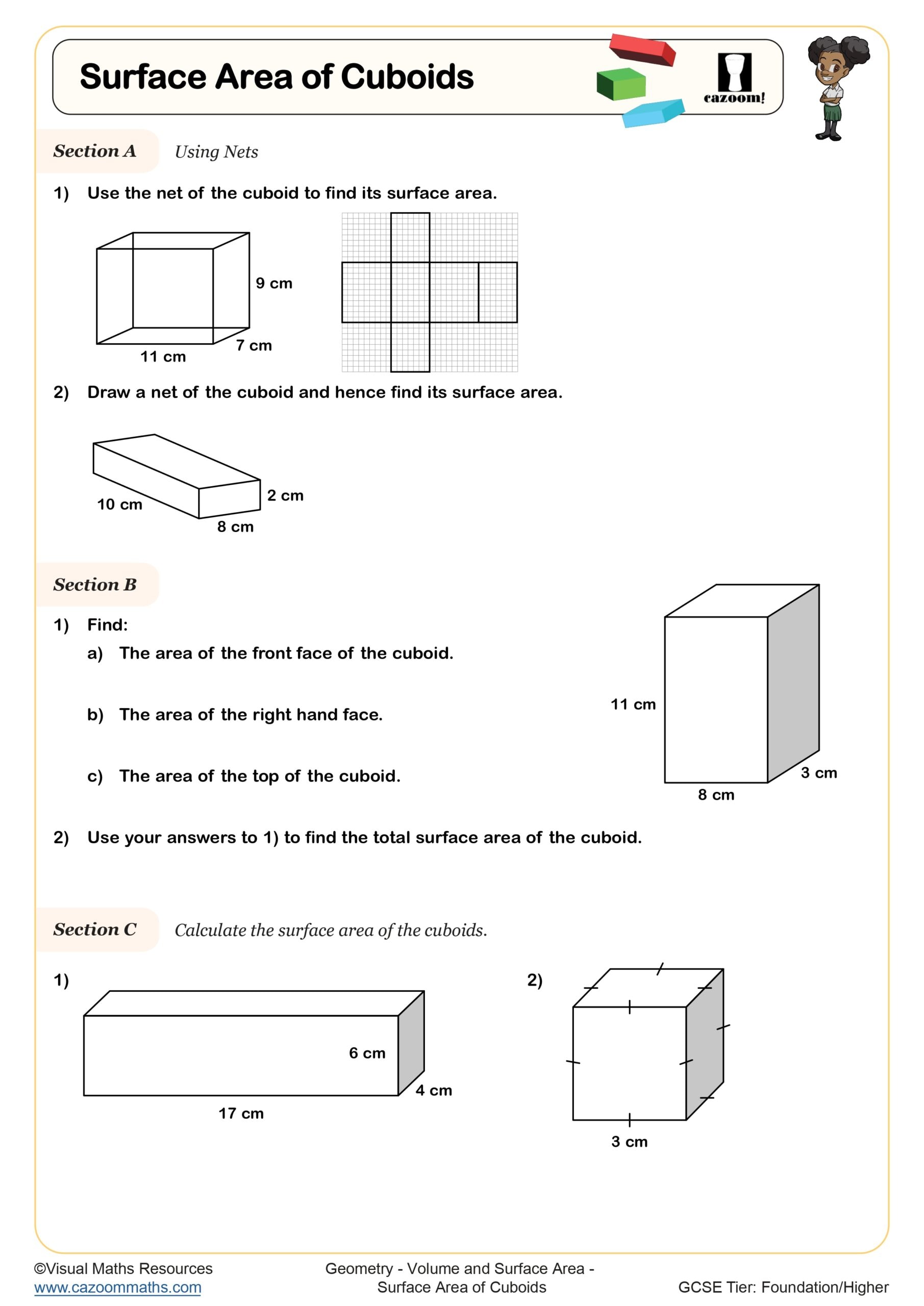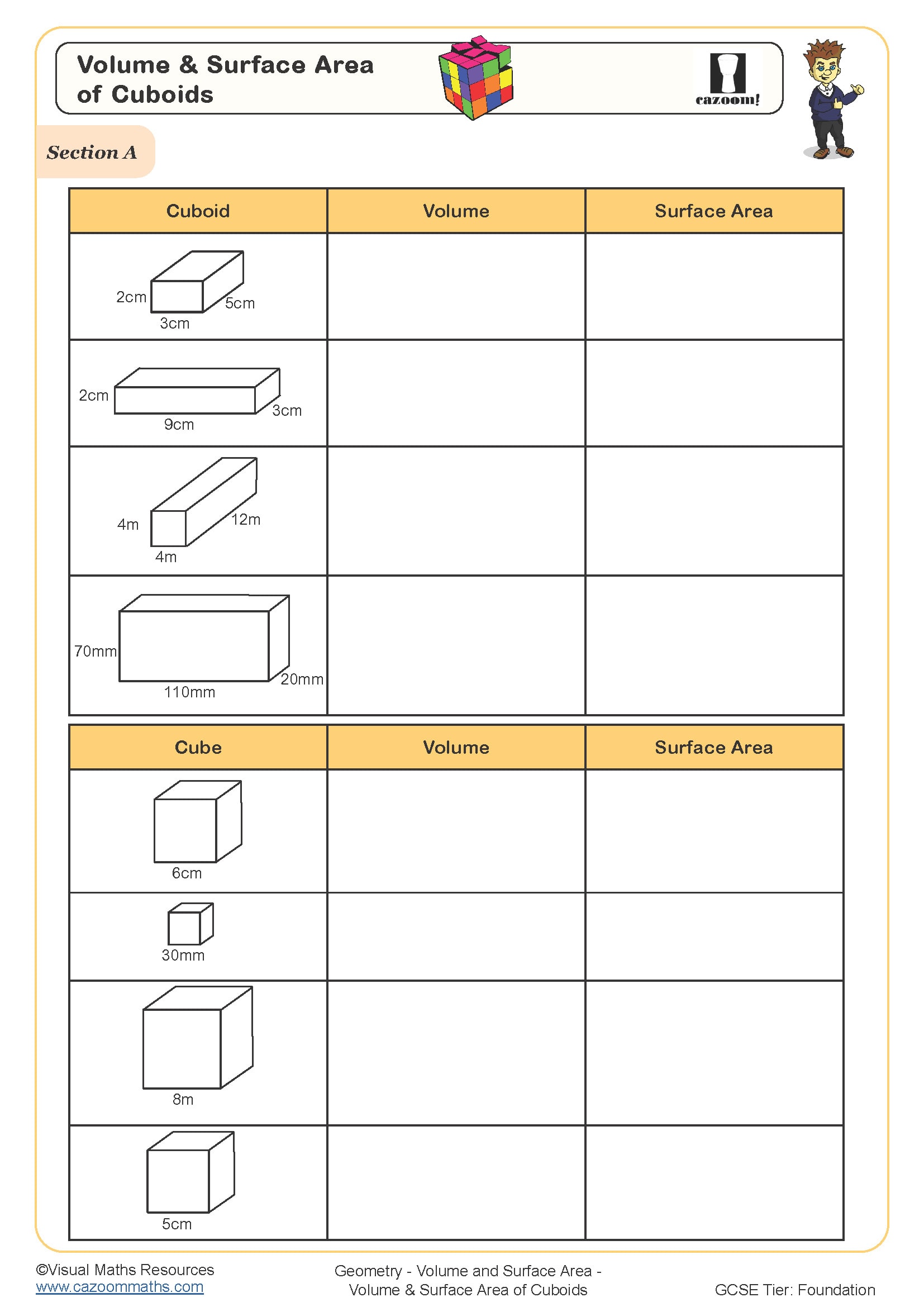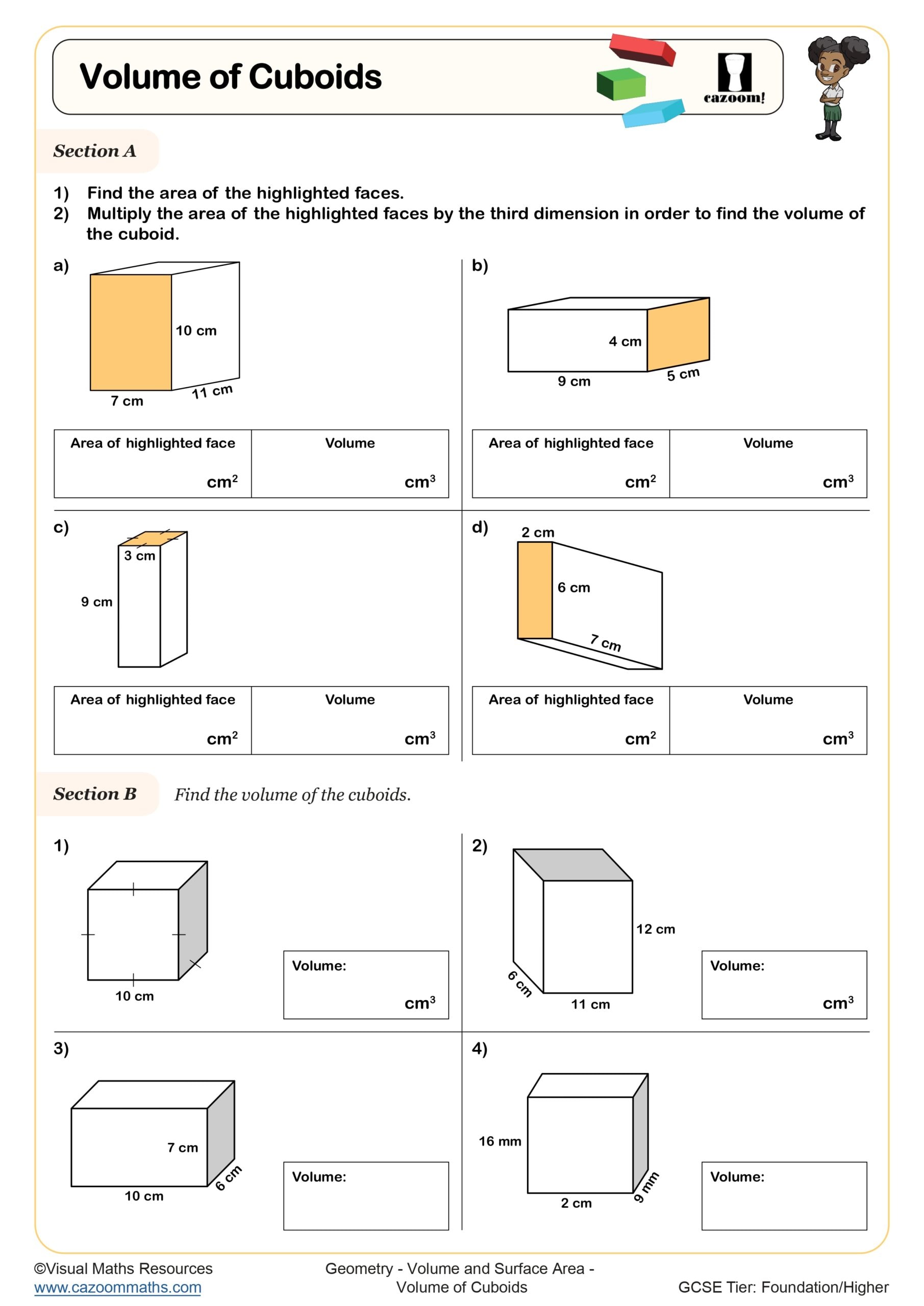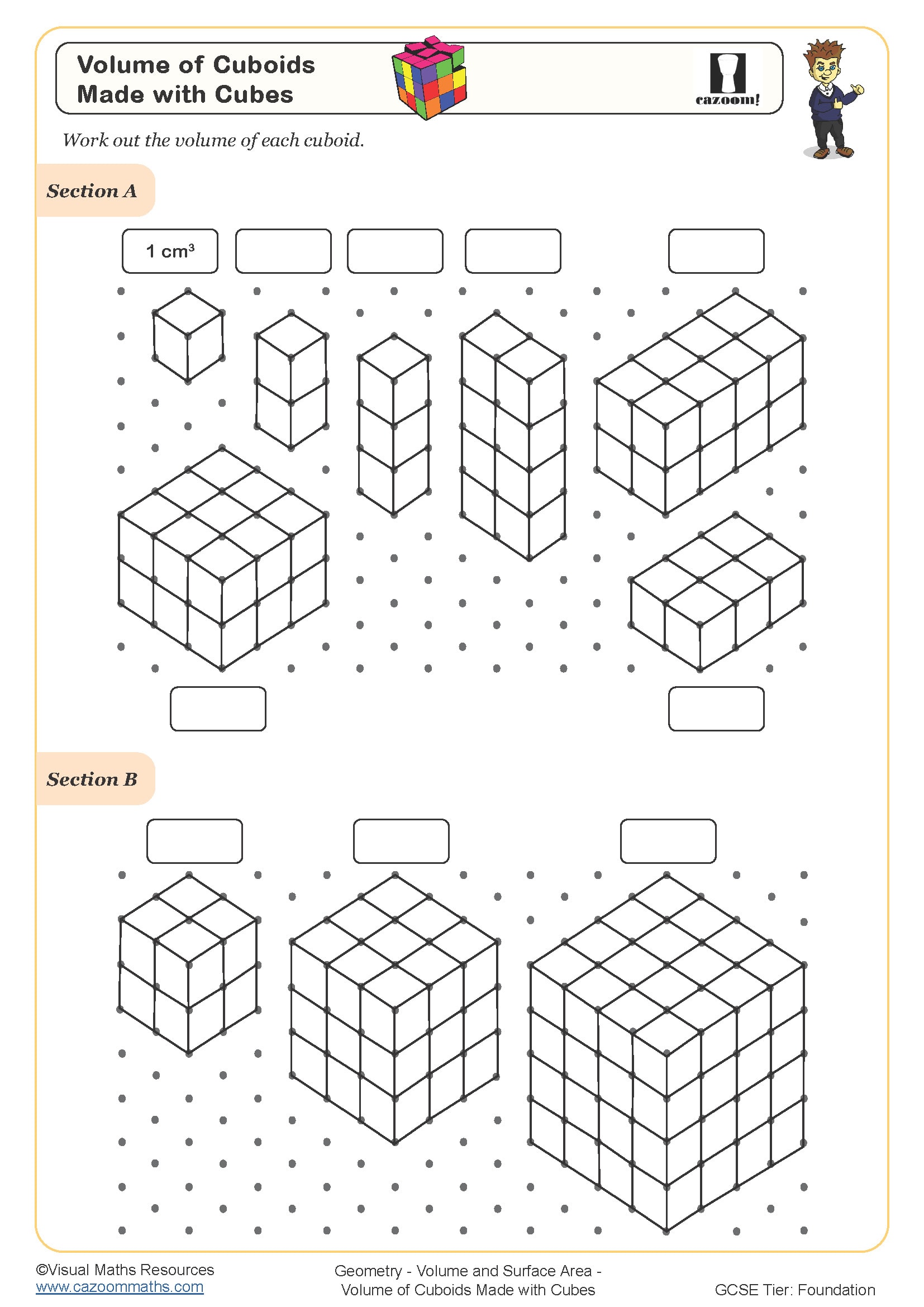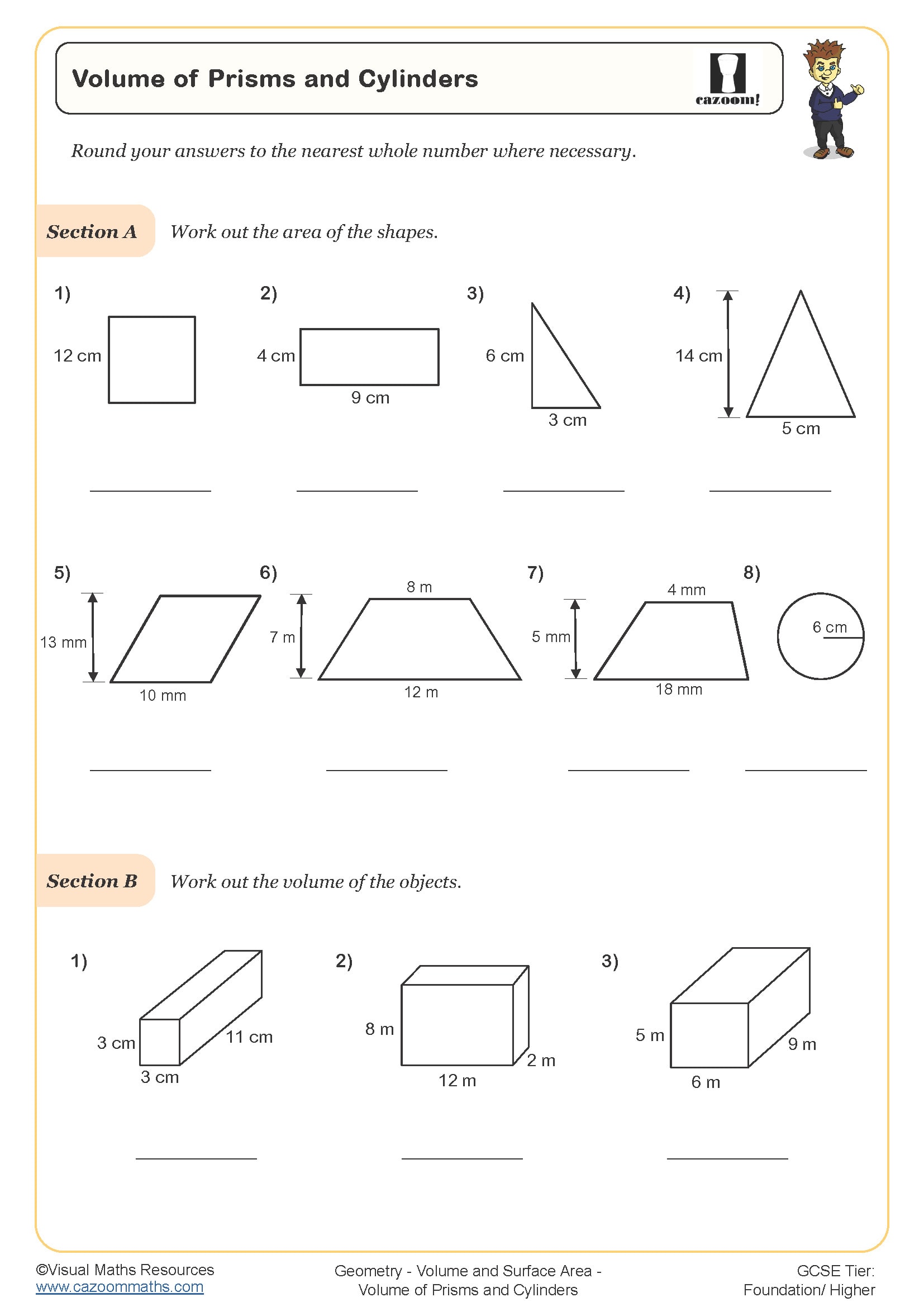Year 8 Surface Area and Volume Worksheets
How Year 8 Geometry Skills Transform Mathematical Understanding
Moving from Year 7's introduction to 3D shapes, students now tackle more sophisticated calculations that require both algebraic thinking and spatial visualisation. The transition represents an essential developmental stage which transforms theoretical mathematical ideas into functional solutions for actual problems. The UK curriculum experts designed these resources to help students develop their formula selection skills, calculation accuracy and systematic working methods, which they will need for their entire secondary education. The regular practice of these materials helps students to recognise patterns in geometric problems, which reduces their fear of complex calculations and establishes a solid base for advanced mathematics in the future. The educational progression from basic cuboids to compound shapes outlines the learning sequence students will encounter in their future schoolwork.
Specific learning benefits include:
• Master formula application for common 3D shapes
• Develops systematic problem-solving approaches
• Strengthens algebraic manipulation skills
• Improves spatial visualisation abilities
• Builds confidence with multi-step calculations
• Prepares foundations for GCSE geometry topics
Essential 3D Shape Calculations for Year 8 Students
The journey through these worksheets follows the concrete-pictorial-abstract teaching approach, helping students visualise shapes before applying formulae. Each resource includes worked solutions that demonstrate the thinking process behind calculations, showing students exactly how to tackle similar problems independently. Starting with familiar shapes allows natural progression before introducing more challenging composite forms that require strategic thinking.
The worksheets in this collection include:
• Volume and Surface Area of Cuboids — practising rectangular prism calculations with clear dimensions
• Surface Area of Prisms — finding total surface areas using net diagrams and formulae
• Volume of Prisms and Cylinders — applying cross-sectional area methods to various shapes
• Surface Area of Cylinders — calculating curved surfaces and circular faces accurately
• Volume of Compound Shapes — breaking complex forms into simpler components
• Mixed Surface Area Problems — combining different shapes in practical contexts
• Problem Solving with Volume — applying knowledge to word problems and scenarios
• Surface Area Challenge Questions — extending understanding through investigation tasks
Classroom-Ready Resources That Save Teaching Time
These worksheets address common teaching challenges by providing clear visual representations alongside numerical problems, helping students who struggle with abstract thinking. The differentiated approach means every student can access the content at their level whilst being appropriately stretched. The answer sheets eliminate marking confusion by displaying both the final answer and the required method. The system allows teachers to detect specific learning needs of students so they can provide personalised support. The various question types help students prepare for different exam formats while keeping them engaged through real-world applications. The worksheets from Cazoom Maths work perfectly with current teaching plans to create dependable homework assignments or classroom materials that need no extra preparation time.
Practical Applications Beyond the Classroom
Understanding surface area and volume unlocks numerous real-world applications that students encounter daily. These mathematical skills form the backbone of practical decision-making in design, construction, and everyday problem-solving.
• Packaging design requires calculating the minimum materials whilst maximising storage capacity
• Swimming pool maintenance involves determining water volume for chemical treatments
• Room decoration needs surface area calculations for paint and wallpaper quantities
• Cooking and baking rely on volume conversions between different container shapes
• Sports equipment design balances volume constraints with performance requirements
• Garden planning uses volume calculations for soil, mulch, and material ordering
• Technology manufacturing optimises component sizes within device casings
• Environmental science measures habitat volumes and surface areas for conservation studies
